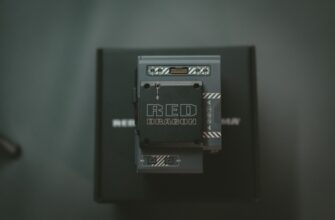- What is Air Gapping and Why Your Private Key Needs It
- How Air-Gapped Private Key Security Works
- Step-by-Step Guide to Creating Your First Air-Gapped Setup
- Critical Best Practices for Air-Gapped Security
- Common Air Gapping Mistakes Beginners Must Avoid
- Air Gapped Private Key FAQ for Beginners
- Is air gapping necessary for small crypto holdings?
- Can smartphones be used for air-gapped setups?
- How often should I access my air-gapped device?
- What’s the biggest vulnerability in air-gapped systems?
- Are hardware wallets considered air-gapped?
What is Air Gapping and Why Your Private Key Needs It
An air-gapped system is a security measure where a device holding your cryptocurrency private key is physically isolated from internet-connected networks. Think of it as creating a “digital fortress” for your crypto assets. For beginners, this approach eliminates remote hacking risks like malware, phishing, or network breaches since the private key never touches an online device. Air gapping is the gold standard for securing high-value crypto holdings because it relies on physical barriers rather than software defenses alone.
How Air-Gapped Private Key Security Works
Air-gapped protection creates an impenetrable gap between your sensitive data and potential online threats. Here’s the core process:
- Offline Generation: Private keys are created on a device that has never been connected to the internet
- Physical Isolation: The key is stored exclusively on removable media like USB drives or hardware wallets
- Manual Transaction Signing: Transactions are prepared online, transferred via SD card or QR code, signed offline, then broadcasted online
- Zero Network Exposure: At no point does the private key interface with networked devices
Step-by-Step Guide to Creating Your First Air-Gapped Setup
Follow this beginner-friendly process to establish your air-gapped security:
- Acquire a clean device (old smartphone or Raspberry Pi) that will NEVER go online
- Install open-source wallet software (like Electrum or ColdCard) via offline download
- Generate your private key/mnemonic phrase on the offline device
- Write the recovery phrase on titanium/cryptosteel and store physically
- Create a watch-only wallet on your online device to monitor funds
- For transactions: Draft on online device > transfer via QR/USB > sign offline > broadcast signed TX
Critical Best Practices for Air-Gapped Security
Maximize protection with these essential habits:
- Use dedicated offline devices – never repurpose old laptops/smartphones
- Employ multi-signature setups requiring multiple air-gapped approvals
- Store backups in geographically separate locations (home safe + bank vault)
- Regularly verify device integrity using checksums before key generation
- Never photograph or type recovery phrases on digital devices
Common Air Gapping Mistakes Beginners Must Avoid
Steer clear of these critical errors:
- Using wireless peripherals (Bluetooth keyboards/mice) with offline devices
- Connecting storage media to infected computers before transferring to air-gapped systems
- Storing digital backups in cloud services or email
- Generating keys on devices that previously had internet access
- Forgetting to test recovery process with small amounts first
Air Gapped Private Key FAQ for Beginners
Is air gapping necessary for small crypto holdings?
While smaller amounts might use hot wallets, air gapping becomes crucial once your holdings exceed what you’d carry in physical cash. It’s about risk tolerance – many start with air gapping early to build secure habits.
Can smartphones be used for air-gapped setups?
Yes! Factory-reset Android devices with WiFi/BT disabled work well. Use airplane mode permanently and remove SIM cards. Popular choices include installing Glacier Protocol or Electrum on dedicated offline phones.
How often should I access my air-gapped device?
Minimize access to only when signing transactions. Each interaction increases potential exposure. For long-term holdings, accessing just 1-2 times annually is ideal. Regular monitoring occurs through watch-only wallets.
What’s the biggest vulnerability in air-gapped systems?
Human error – particularly during the transaction signing process. Always verify receiving addresses on the air-gapped device itself, not just the online computer. Malware can alter addresses during transfer.
Are hardware wallets considered air-gapped?
True air-gapped hardware wallets (like ColdCard) never connect via USB. They use SD cards or QR codes. USB-connected hardware wallets offer strong security but don’t provide full air-gap protection against sophisticated attacks.








